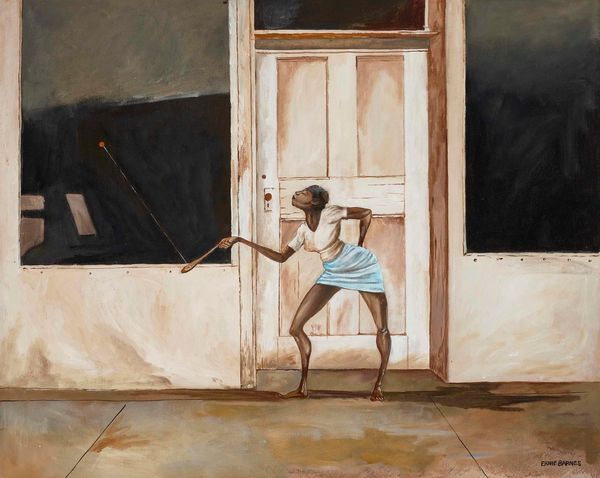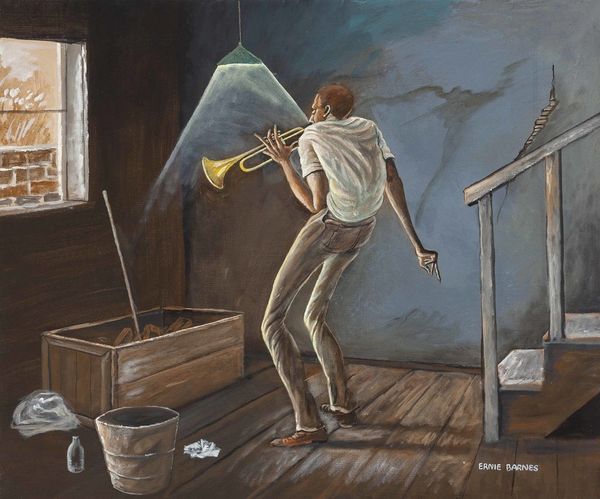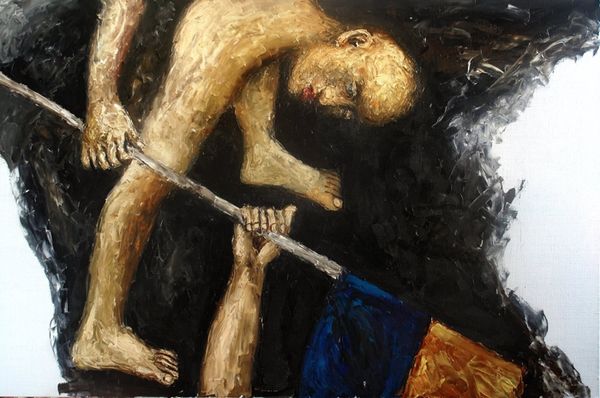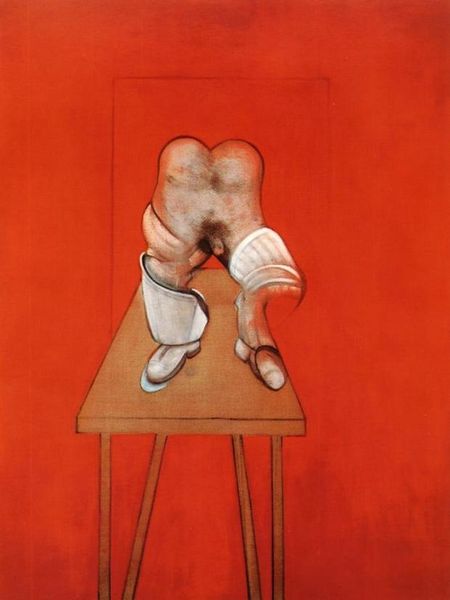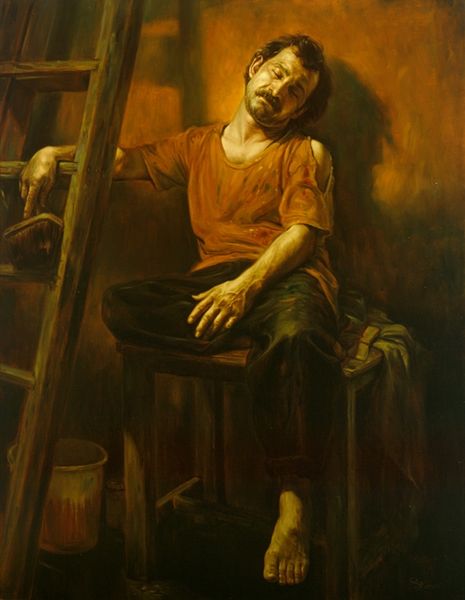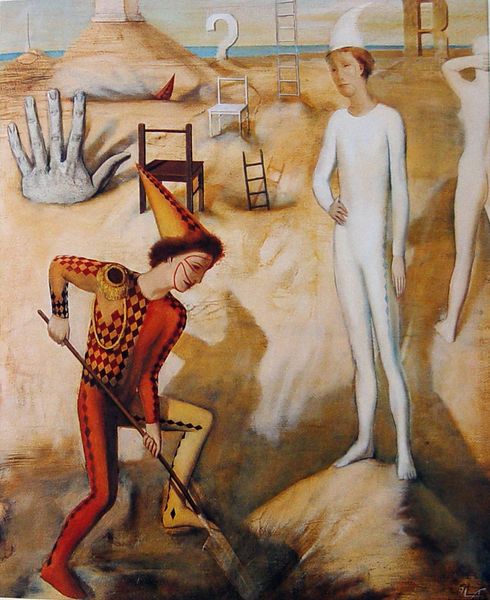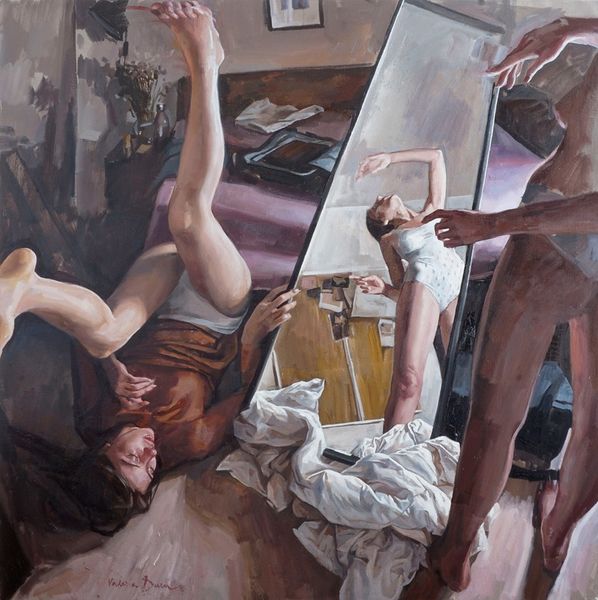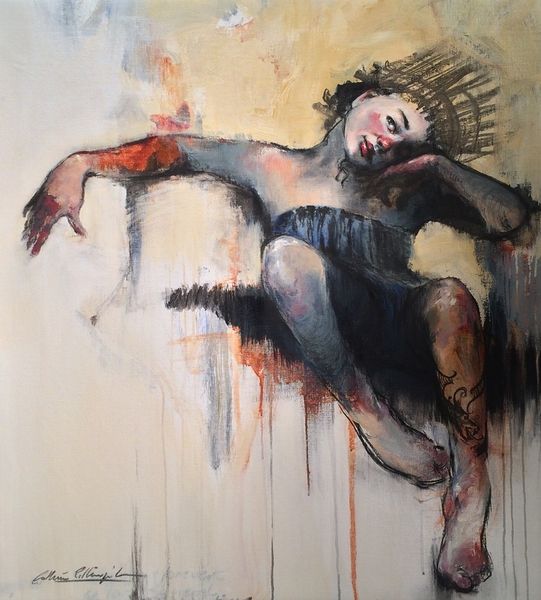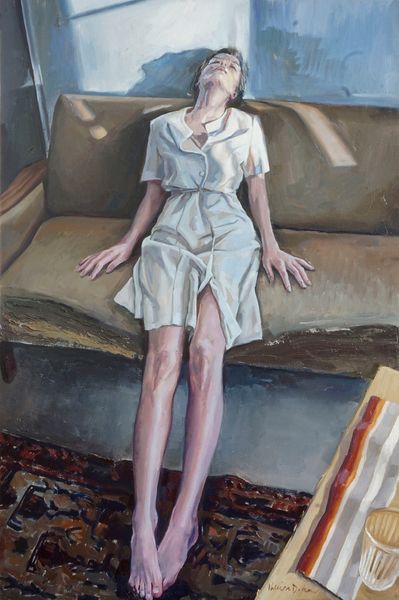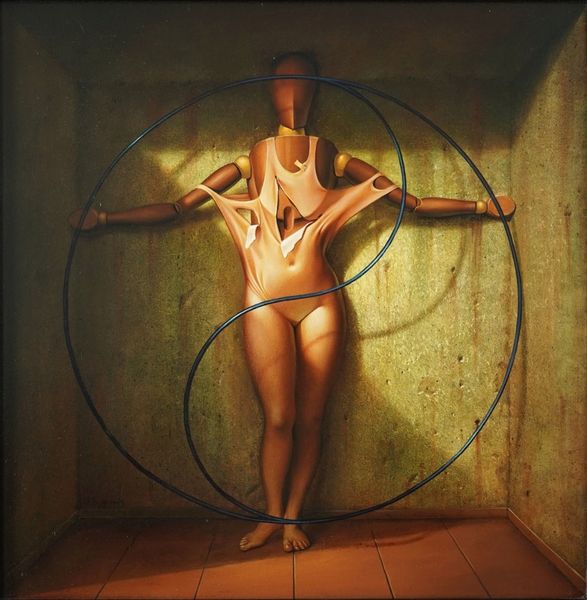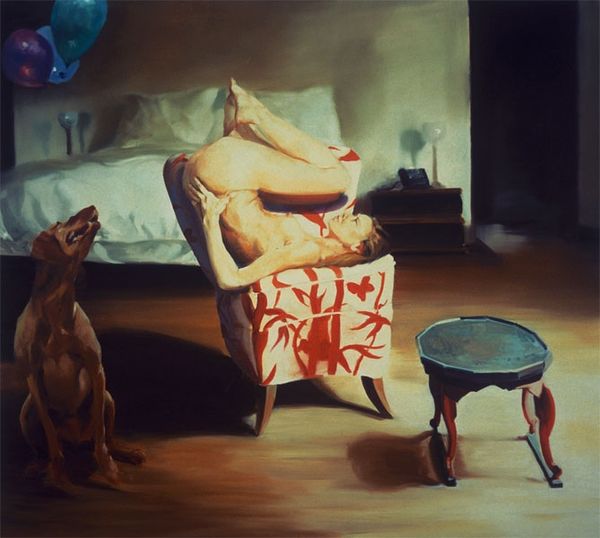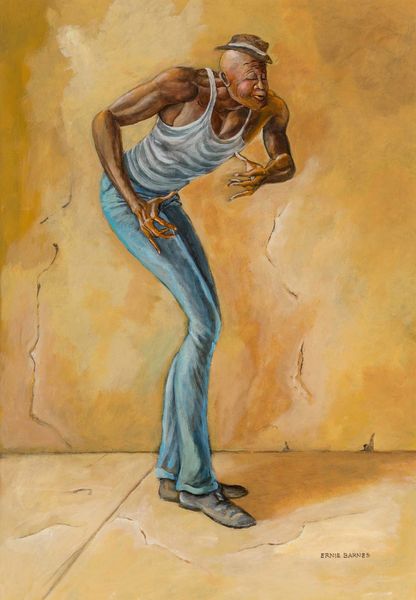
painting, oil-paint
#
portrait
#
figurative
#
painting
#
oil-paint
#
figuration
#
oil painting
#
acrylic on canvas
#
genre-painting
#
modernism
#
realism
Copyright: Modern Artists: Artvee
Curator: This is Ernie Barnes’ "The Maestro." Note how it exemplifies the artist’s signature elongation of the human form, using the visual language of realism to amplify emotional expressiveness. Editor: Yeah, immediately, the unnaturally stretched limbs grab you. It's… poignant, almost unsettling. Like the figure's reaching for something just beyond grasp, contained by these oppressive beige walls. Curator: Indeed. The room itself can be interpreted as symbolic, representing internal spaces, psychological boundaries, or the limitations of a performer's physical confinement versus the expansive world of music. What meaning can you extrapolate from that, I wonder? Editor: Okay, wow, extrapolating already! For me, it sparks something simpler. I can almost *feel* that pre-performance jitters tension, like the calm before a storm onstage. Is that instrument… old radio? Is there any significance, apart of old-style theme? Curator: Yes, it is like an antique radio and possibly microphone setup on a stand that suggests old recording instruments. A number of scholars have viewed this specific model radio as a common status symbols in the segregated African-American community. Editor: Status symbols and segregated America - That is powerful and deep meaning for this piece! How subtle! It is amazing how a seemingly simple portrait captures these hidden nuances of status and resilience through shared imagery! The brown tones of the painting only amplifies this muted sense of nostalgia, the interior domesticity clashing with aspiration, don't you think? Curator: Precisely. Note that Barnes, throughout his art career, consciously employs gesture, body language, and even seemingly mundane objects like the radio to signify larger cultural and societal themes related to segregation. Editor: I tell you what I think. Now that I see this I also wonder if that elongated gesture of the arms that looked like constraint it is in fact freedom—or maybe it suggests the yearning and expectation of freedom to come. Curator: Barnes certainly excelled in encoding dualities. He seems less interested in stark pronouncements of the inequities of race than he is interested in exploring the psychological complexities of the individuals affected by such experiences. Editor: The power of this picture relies in its understatement, inviting meditation instead of prescribing meaning, which might be more resonant now than ever.
Comments
No comments
Be the first to comment and join the conversation on the ultimate creative platform.
